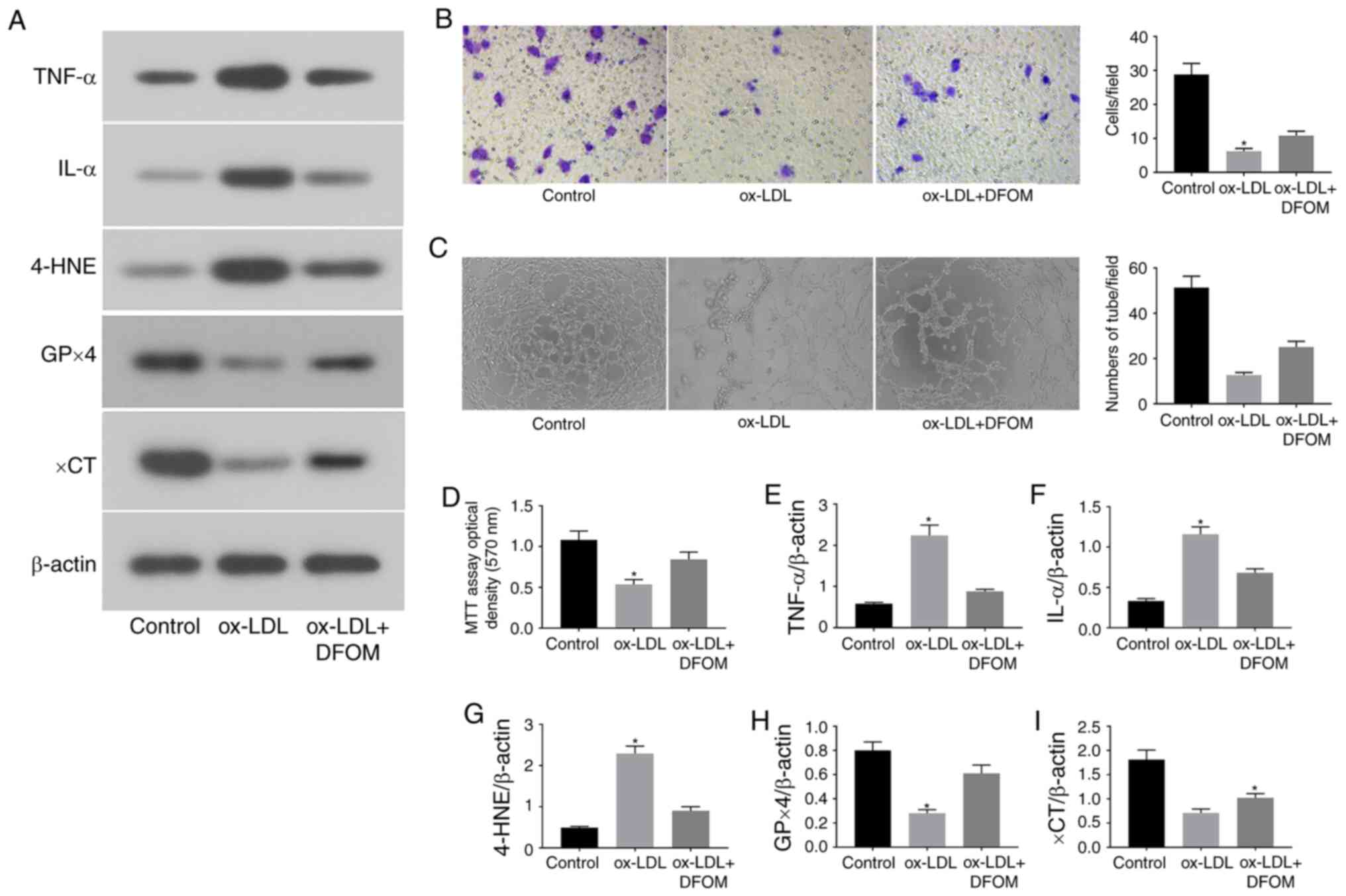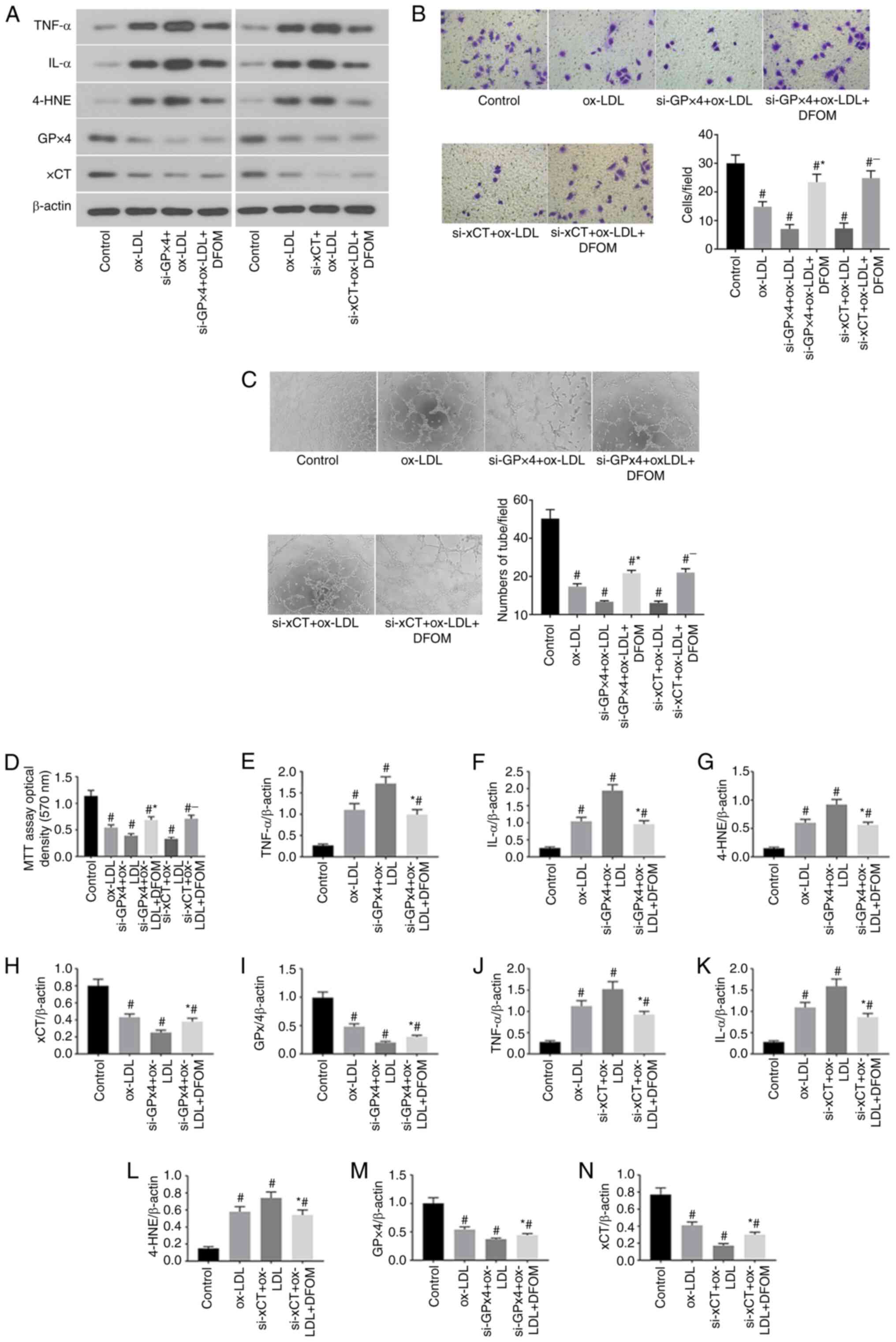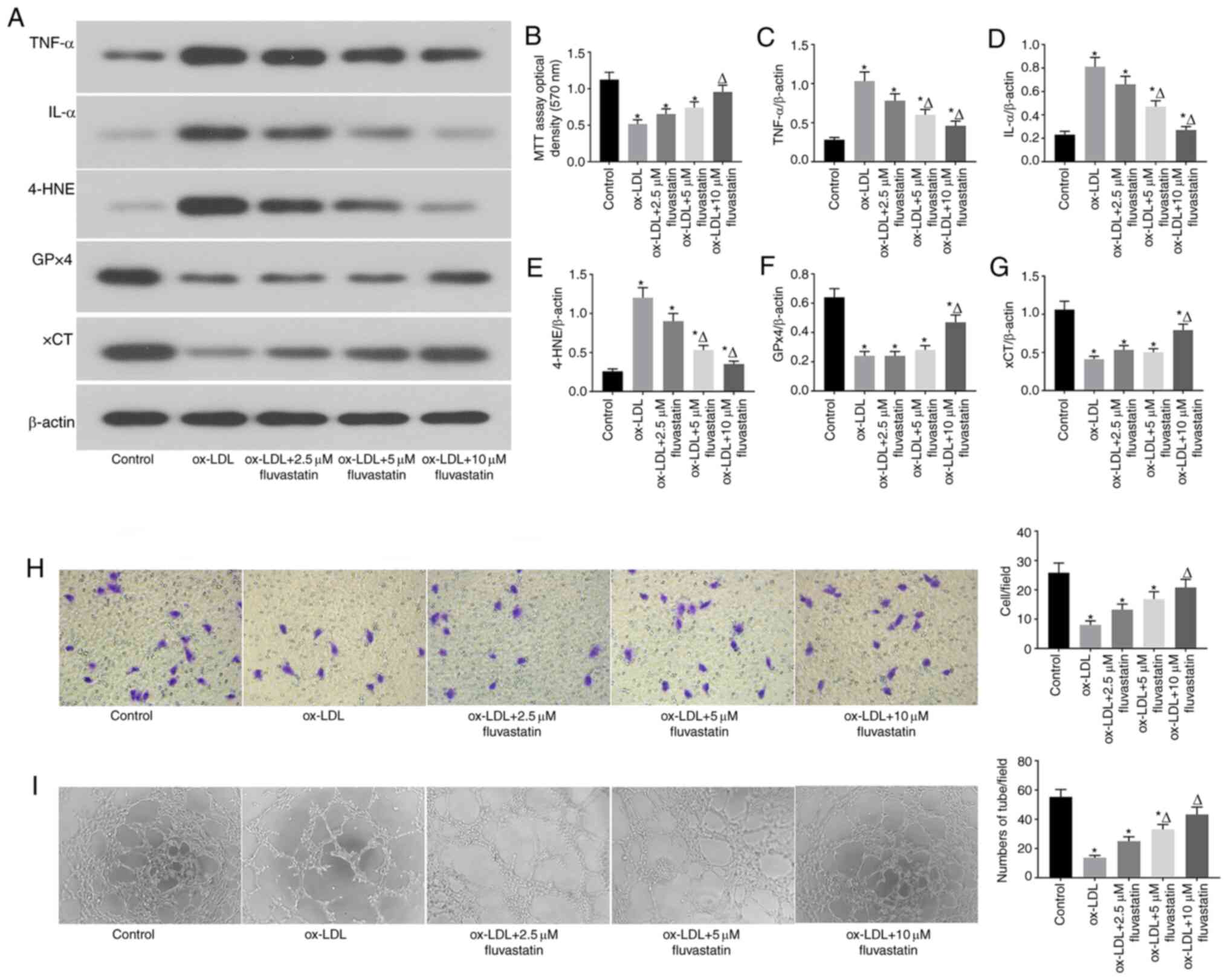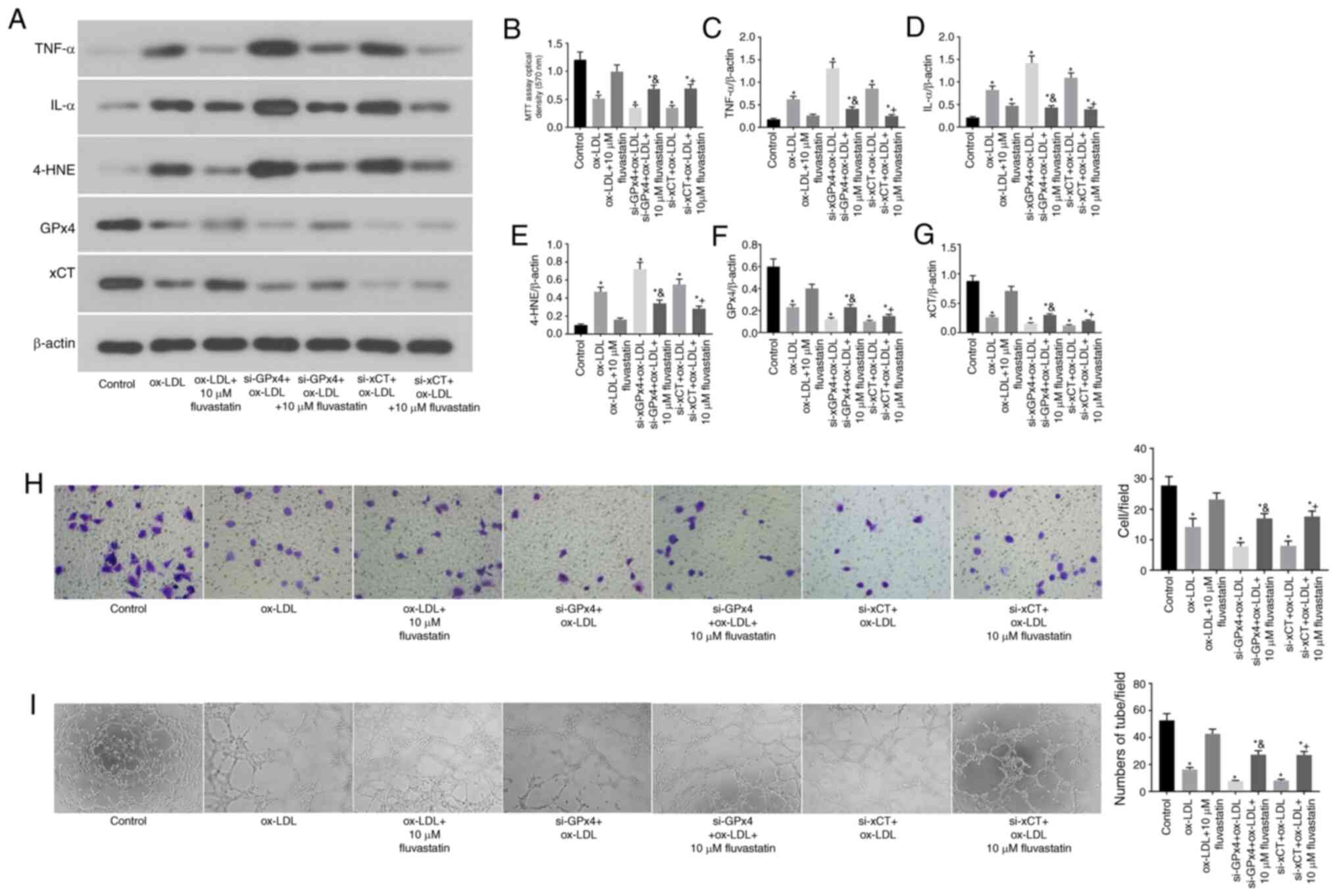|
1
|
Khaddaj Mallat R, Mathew John CM, Kendrick
DJ and Braun AP: The vascular endothelium: A regulator of arterial
tone and interface for the immune system. Crit Rev Clin Lab Sci.
54:458–470. 2017.PubMed/NCBI View Article : Google Scholar
|
|
2
|
Rajendran P, Rengarajan T, Thangavel J,
Nishigaki Y, Sakthisekaran D, Sethi G and Nishigaki I: The vascular
endothelium and human diseases. Int J Biol Sci. 9:1057–1069.
2013.PubMed/NCBI View Article : Google Scholar
|
|
3
|
Beerepoot LV, Mehra N, Vermaat JS,
Zonnenberg BA, Gebbink MF and Voest EE: Increased levels of viable
circulating endothelial cells are an indicator of progressive
disease in cancer patients. Ann Oncol. 15:139–145. 2004.PubMed/NCBI View Article : Google Scholar
|
|
4
|
Furstenberger G, von Moos R, Lucas R,
Thürlimann B, Senn HJ, Hamacher J and Boneberg EM: Circulating
endothelial cells and angiogenic serum factors during neoadjuvant
chemotherapy of primary breast cancer. Br J Cancer. 94:524–531.
2006.PubMed/NCBI View Article : Google Scholar
|
|
5
|
Park KH and Park WJ: Endothelial
dysfunction: Clinical implications in cardiovascular disease and
therapeutic approaches. J Korean Med Sci. 30:1213–1225.
2015.PubMed/NCBI View Article : Google Scholar
|
|
6
|
Li TB, Zhang YZ, Liu WQ, Zhang JJ, Peng J,
Luo XJ and Ma QL: Correlation between NADPH oxidase-mediated
oxidative stress and dysfunction of endothelial progenitor cell in
hyperlipidemic patients. Korean J Intern Med. 33:313–322.
2018.PubMed/NCBI View Article : Google Scholar
|
|
7
|
Valente AJ, Irimpen AM, Siebenlist U and
Chandrasekar B: OxLDL induces endothelial dysfunction and death via
TRAF3IP2: Inhibition by HDL3 and AMPK activators. Free Radic Biol
Med. 70:117–128. 2014.PubMed/NCBI View Article : Google Scholar
|
|
8
|
Morawietz H: LOX-1 receptor as a novel
target in endothelial dysfunction and atherosclerosis. Dtsch Med
Wochenschr. 135:308–312. 2010.PubMed/NCBI View Article : Google Scholar : (In German).
|
|
9
|
Wahyudi S and Sargowo D: Green tea
polyphenols inhibit oxidized LDL-induced NF-KB activation in human
umbilical vein endothelial cells. Acta Med Indones. 39:66–70.
2007.PubMed/NCBI
|
|
10
|
Biocca S, Iacovelli F, Matarazzo S,
Vindigni G, Oteri F, Desideri A and Falconi M: Molecular mechanism
of statin-mediated LOX-1 inhibition. Cell Cycle. 14:1583–1595.
2015.PubMed/NCBI View Article : Google Scholar
|
|
11
|
Li J, Cao F, Yin HL, Huang ZJ, Lin ZT, Mao
N, Sun B and Wang G: Ferroptosis: Past, present and future. Cell
Death Dis. 11(88)2020.PubMed/NCBI View Article : Google Scholar
|
|
12
|
Maiorino M, Conrad M and Ursini F: GPx4,
lipid peroxidation, and cell death: Discoveries, rediscoveries, and
open issues. Antioxid Redox Signal. 29:61–74. 2018.PubMed/NCBI View Article : Google Scholar
|
|
13
|
Wortmann M, Schneider M, Pircher J,
Hellfritsch J, Aichler M, Vegi N, Kölle P, Kuhlencordt P, Walch A,
Pohl U, et al: Combined deficiency in glutathione peroxidase 4 and
vitamin E causes multiorgan thrombus formation and early death in
mice. Circ Res. 113:408–417. 2013.PubMed/NCBI View Article : Google Scholar
|
|
14
|
Ridker PM, Mora S, Rose L and Group JTS:
Percent reduction in LDL cholesterol following high-intensity
statin therapy: Potential implications for guidelines and for the
prescription of emerging lipid-lowering agents. Eur Heart J.
37:1373–1379. 2016.PubMed/NCBI View Article : Google Scholar
|
|
15
|
Correction to: Pleiotropic effects of
statins on the cardiovascular system. Circ Res. 123(e20)2018.
|
|
16
|
Wang J, Tokoro T, Matsui K, Higa S and
Kitajima I: Pitavastatin at low dose activates endothelial nitric
oxide synthase through PI3K-AKT pathway in endothelial cells. Life
Sci. 76:2257–2268. 2005.PubMed/NCBI View Article : Google Scholar
|
|
17
|
Weis M, Heeschen C, Glassford AJ and Cooke
JP: Statins have biphasic effects on angiogenesis. Circulation.
105:739–745. 2002.PubMed/NCBI View Article : Google Scholar
|
|
18
|
Stockwell BR, Friedmann Angeli JP, Bayir
H, Bush AI, Conrad M, Dixon SJ, Fulda S, Gascón S, Hatzios SK,
Kagan VE, et al: Ferroptosis: A regulated cell death nexus linking
metabolism, redox biology, and disease. Cell. 171:273–285.
2017.PubMed/NCBI View Article : Google Scholar
|
|
19
|
Di Pietro N, Formoso G and Pandolfi A:
Physiology and pathophysiology of oxLDL uptake by vascular wall
cells in atherosclerosis. Vascul Pharmacol. 84:1–7. 2016.PubMed/NCBI View Article : Google Scholar
|
|
20
|
Yang WS, SriRamaratnam R, Welsch ME,
Shimada K, Skouta R, Viswanathan VS, Cheah JH, Clemons PA, Shamji
AF, Clish CB, et al: Regulation of ferroptotic cancer cell death by
GPX4. Cell. 156:317–331. 2014.PubMed/NCBI View Article : Google Scholar
|
|
21
|
Wang Z, Ding Y, Wang X, Lu S, Wang C, He
C, Wang L, Piao M, Chi G, Luo Y and Ge P: Pseudolaric acid B
triggers ferroptosis in glioma cells via activation of Nox4 and
inhibition of xCT. Cancer Lett. 428:21–33. 2018.PubMed/NCBI View Article : Google Scholar
|
|
22
|
Haruna Y, Morita Y, Yada T, Satoh M, Fox
DA and Kashihara N: Fluvastatin reverses endothelial dysfunction
and increased vascular oxidative stress in rat adjuvant-induced
arthritis. Arthritis Rheum. 56:1827–1835. 2007.PubMed/NCBI View Article : Google Scholar
|
|
23
|
Ait-Oufella H, Maury E, Lehoux S, Guidet B
and Offenstadt G: The endothelium: Physiological functions and role
in microcirculatory failure during severe sepsis. Intensive Care
Med. 36:1286–1298. 2010.PubMed/NCBI View Article : Google Scholar
|
|
24
|
Cosentino F, Rubattu S, Savoia C,
Venturelli V, Pagannonne E and Volpe M: Endothelial dysfunction and
stroke. J Cardiovasc Pharmacol. 38 (Suppl 2):S75–S78.
2001.PubMed/NCBI View Article : Google Scholar
|
|
25
|
Franses JW, Drosu NC, Gibson WJ, Chitalia
VC and Edelman ER: Dysfunctional endothelial cells directly
stimulate cancer inflammation and metastasis. Int J Cancer.
133:1334–1344. 2013.PubMed/NCBI View Article : Google Scholar
|
|
26
|
Widmer RJ and Lerman A: Endothelial
dysfunction and cardiovascular disease. Glob Cardiol Sci Pract.
2014:291–308. 2014.PubMed/NCBI View Article : Google Scholar
|
|
27
|
Young MR: Endothelial cells in the eyes of
an immunologist. Cancer Immunol Immunother. 61:1609–1616.
2012.PubMed/NCBI View Article : Google Scholar
|
|
28
|
Stroka KM, Levitan I and Aranda-Espinoza
H: OxLDL and substrate stiffness promote neutrophil transmigration
by enhanced endothelial cell contractility and ICAM-1. J Biomech.
45:1828–1834. 2012.PubMed/NCBI View Article : Google Scholar
|
|
29
|
Feng Y, Cai ZR, Tang Y, Hu G, Lu J, He D
and Wang S: TLR4/NF-κB signaling pathway-mediated and oxLDL-induced
up-regulation of LOX-1, MCP-1, and VCAM-1 expressions in human
umbilical vein endothelial cells. Genet Mol Res. 13:680–695.
2014.PubMed/NCBI View Article : Google Scholar
|
|
30
|
Fang X, Wang H, Han D, Xie E, Yang X, Wei
J, Gu S, Gao F, Zhu N, Yin X, et al: Ferroptosis as a target for
protection against cardiomyopathy. Proc Natl Acad Sci USA.
116:2672–2680. 2019.PubMed/NCBI View Article : Google Scholar
|
|
31
|
Sui X, Zhang R, Liu S, Duan T, Zhai L,
Zhang M, Han X, Xiang Y, Huang X, Lin H and Xie T: RSL3 drives
ferroptosis through GPX4 inactivation and ROS production in
colorectal cancer. Front Pharmacol. 9(1371)2018.PubMed/NCBI View Article : Google Scholar
|
|
32
|
Yu H, Guo P, Xie X, Wang Y and Chen G:
Ferroptosis, a new form of cell death, and its relationships with
tumourous diseases. J Cell Mol Med. 21:648–657. 2017.PubMed/NCBI View Article : Google Scholar
|
|
33
|
Adams SP, Sekhon SS, Tsang M and Wright
JM: Fluvastatin for lowering lipids. Cochrane Database Syst Rev.
3(CD012282)2018.PubMed/NCBI View Article : Google Scholar
|
|
34
|
Lubrano V and Balzan S: Role of oxidative
stress-related biomarkers in heart failure: Galectin 3,
α1-antitrypsin and LOX-1: New therapeutic perspective? Mol Cell
Biochem. 464:143–152. 2020.PubMed/NCBI View Article : Google Scholar
|
|
35
|
Singh S and Gautam AS: Upregulated LOX-1
receptor: Key player of the pathogenesis of atherosclerosis. Curr
Atheroscler Rep. 21(38)2019.PubMed/NCBI View Article : Google Scholar
|
|
36
|
Zeya B and Chandra NC: LOX-1: Its
cytotopographical variance and disease stress. J Biochem Mol
Toxicol. 33(e22375)2019.PubMed/NCBI View Article : Google Scholar
|
|
37
|
Friedmann Angeli JP and Conrad M: Selenium
and GPX4, a vital symbiosis. Free Radic Biol Med. 127:153–159.
2018.PubMed/NCBI View Article : Google Scholar
|
|
38
|
Shintoku R, Takigawa Y, Yamada K, Kubota
C, Yoshimoto Y, Takeuchi T, Koshiishi I and Torii S:
Lipoxygenase-mediated generation of lipid peroxides enhances
ferroptosis induced by erastin and RSL3. Cancer Sci. 108:2187–2194.
2017.PubMed/NCBI View Article : Google Scholar
|


















